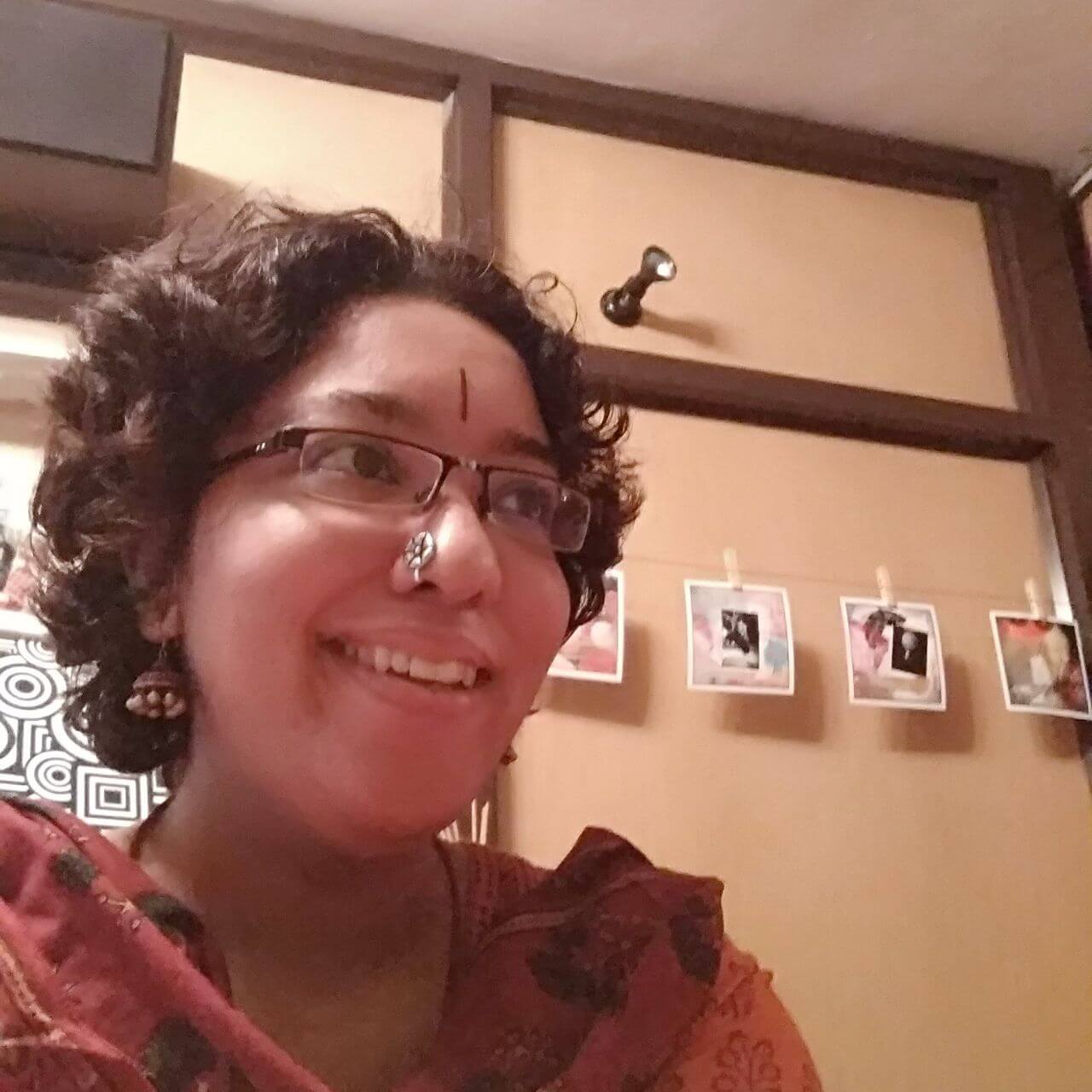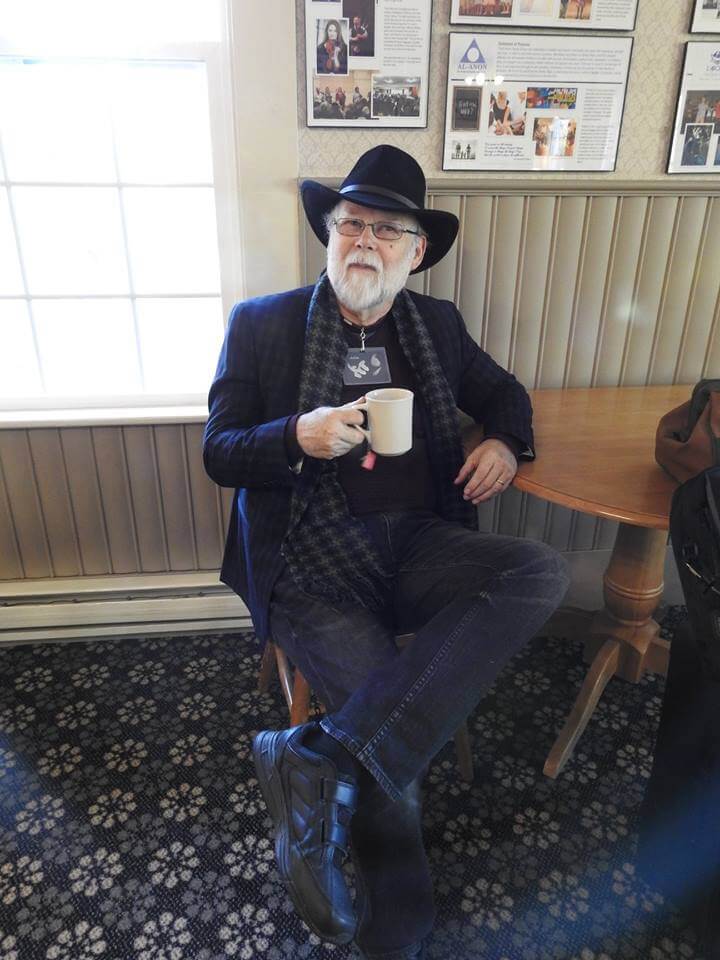There’s nothing like the succinct impact of a haiku poem to instantly hone your attention on the present moment and to remind you of words’ inexhaustible magic (to quote Dumbledore!). So if you’re as fond of the form as we are, have been writing your own haiku poem, and feel ready to send out your work, check out our conversations with a few of our favorite haiku poem/Japanese short-form journals. We spoke with Tom Sacramona, editor of Frogpond; Rick Lupert, editor of Haikuniverse; Shloka Shankar, editor of Sonic Boom and Yavanika Press; and John Stevenson of Heron’s Nest.
Tom Sacramona, Frogpond

What draws you to haiku and other Japanese short forms?
I really enjoy Japanese short forms for the way in which nature is consistently represented on equal footing with human beings. That is the way of the world after all, although there is a lot in the world which would have us not believe it. Likewise, I have a love of Japanese aesthetics and find that they speak more to my own worldview and the values I try to cultivate within myself, such as an emphasis on being in the present moment. Of any exploration I’ve done into Asian philosophies, and Zen Buddhism in particular, haiku is what really stays with me. To call it a philosophy is probably wrong it feels like a way of life. To write Japanese short forms, it is important to connect with the present while being grounded in our five senses, and the best haiku often contain more than one sense perception.
An early definition of haiku put forth by the Haiku Society of America (HSA) was “a moment keenly perceived in which human nature is connected to all of nature.” I’m roughly paraphrasing this, but I think it is important—at least why haiku are powerful to me. A great haiku can take the universal and make it particular or vice versa. I enjoy writing within the confines of genre poetry, although the idea of 5-7-5 is antiquated and something English-language haiku is working hard to get across to mainstream poets and writers. Within the haiku community, the issue of haiku not needing to be 5-7-5 was put to bed in the 1970s, but we understand how ingrained this notion is, and so you will find many essays explaining this distinction on the internet.
How or why was Frogpond founded?
The Haiku Society of America was founded in New York in 1968 by Harold G. Henderson and Leroy Kanterman to promote the writing and appreciation of haiku in English. Harold Henderson was an early translator of Japanese haiku into English and the HSA’s annual haiku contest bears his name. Leroy Kanterman served as the society’s president in 1968-9 and 1972. We used to publish a book award in his name but it has been renamed simply the Merit Book Award. As one of the earliest societies dedicated exclusively to teaching others about haiku, the HSA started a haiku journal called Frogpond over forty years ago. It features work by HSA members and non-members alike.
What do you enjoy about your work as an editor?
I am just beginning my time as editor of Frogpond, and what I imagine I will most enjoy is publishing someone’s first haiku.
What qualities do the poems you accept for publication possess? What kind of poems are most likely to catch your attention?
While haiku in English need not be steeped in Japanese poetic sensibilities, the best haiku effortlessly engage qualities such as yūgen (ineffable mystery), karumi (lightness, humor), mono no aware (empathy), sabi (appreciation of loneliness, poverty, and simplicity), wabi (appreciation of old, worn things), zōka (following the creative), and makoto (truthfulness). I am grateful to a book Haiku: A Poet’s Guide by Lee Gurga which makes definitions of these terms easily accessible. There is a term Gurga presents in this book which comes over from the Japanese and applies to a certain type of haiku which I’m not crazy about, which read like a description of the weather and this term is kachō fūgetsu or “flower-bird-wind-moon” verse. When defining this term, Gurga explains that “figurative language is essential to poetry, so much so that the avoidance of it in haiku leads some to think that haiku are all simple, superficial snapshots of nature, ‘birds and butterflies garden-party haiku.’” What Gurga is warning is that what makes a haiku poem interesting and worthy of publication is what makes any other type of poetry interesting—it defamiliarizes its subject and points us to truth. Haiku are challenging because they must do this in a brief form, with genre defining characteristics, such as having a two-part structure—a fragment and a phrase—and showing connections between images in each part. I can think of so many great examples of haiku which operate beyond flower-bird-wind-moon poems to convey real creativity from poets seeking to understand their universe and their place within it—it’s that type of poem I’m most interested to examine and publish in Frogpond.
What are some of your favorite poems or poets?
My favorite haiku poets are Robert Spiess, Wally Swist, Paul Miller, and Brad Bennett, as well as Ruth Yarrow, Hannah Mahoney, Julie Warther, and Roberta Beary. An all-time favorite poet of mine is Gary Snyder. As the protagonist of Jack Kerouac’s The Dharma Bums, he initially inspired me to start writing what I thought were haiku (until I discovered the haiku community and their publications). Gary Snyder’s poetry and essays continue to inspire me.
What other literary journals do you enjoy reading?
Since I love reading haiku, I enjoy other haiku journals, such as Acorn, Akitsu Quarterly, bottle rockets, The Heron’s Nest, and Modern Haiku. I like the journal Rattle, as well, which once did an issue featuring Japanese poetic forms.
Where should poets send their submissions?
Submissions to Frogpond should be sent to Tom Sacramona via email with (a) poems in the body of the email (no attachments), (b) with the subject line: Frogpond Submission, and (c) with place of residence noted in the body of the email. Keep in mind a submission may include any or all of the following: 1) Up to ten (10) haiku, 2) Up to three (3) haibun, 3) Up to three (3) rengay or other short sequence, and 4) one (1) renku or other long sequence. Our submission period is one month long: July for the autumn issue, November for the winter issue, and March for the spring/summer issue. I invite anyone interested in submitting to review the guidelines on our website here. A helpful resource available on our website are PDF copies of back issues of the journal. I encourage anyone to read some of them to get a sense of what we are looking to publish.
If someone has a question, how can they contact you?
Please send any inquiries to Tom Sacramona by email. I also want to suggest the following resources where aspiring haiku writers may learn more about the types of poetry we publish and the larger haiku community in general:
Rick Lupert, Haikuniverse

Photo credit to Alexis Rhone Fancher.
What draws you to haiku and other Japanese short forms?
Poetry is about the economy of language and I can think of no other form more economical than the haiku poem, senryu, or the more Americanized versions of these that don’t always stick to the traditional guidelines of the original Japanese forms. I’ve seen them called “American Haiku” and I sometimes just call them “five seven fives.” I often build entire poems around a single thought or observation…The short form sometimes allows you to cut out the extra chaff and distill that thought, with minimal context, into a sometimes powerful, sometimes funny, sometimes surreal poem. Also, I’m highly aware of the irony that the answer to this question is much longer than the poems being talked about.
How or why was Haikuniverse founded?
I had been running the weekly Poetry Super Highway publication for a while, which hosts a number of unique projects throughout the year [an annual exchange of poetry books, poetry writing prompts every day during National Poetry Month, an annual poetry e-book “Free-for-All,” a contest in which everyone gets a prize just for entering (in addition to the actual contest winners)]. I’m always looking for new ways to further Poetry Super Highway’s mission to expose as many people to as many other people’s poetry as possible, and I had recently started receiving the Academy of American Poet’s Poem-A-Day email. Inspired by that, and my own work’s occasional focus on short poems, I thought it would be an interesting challenge to try to publish a haiku or micro-poem every day. I also happen to be a graphic designer and web-developer by day, so I knew I could put together all the technicalities to create the website and daily email. Haikuniverse was born!
What do you enjoy about your work as an editor?
I love the forced immersion into the artwork that is required as an editor. Haikuniverse receives upwards of 100 submissions a week. I read them all and, even publishing one a day, there are many (many) that I’d love to publish but can’t. Even if I can’t publish them, I get to enjoy them. I’ve also had the opportunity to “meet” poets from all over the world who submit work to Haikuniverse, which helps create the idea of a global community that I’m a part of. It makes this huge world a little smaller.
What qualities do the poems you accept for publication possess? What kind of poems are most likely to catch your attention?
I’m purposefully vague in *Haikuniverse*’s submission guidelines as to what we’re looking for. I want the potential submitter to feel free to (while following the guidelines) submit whatever they want, created with their own unique voice, without concern about what they think I want to see. That having been said, I love humor. I love unexpected turns. I love tiny little slice-of-life observations that allow you to build a world around them, and although I can’t specify what would qualify as such, I love a powerful line that makes me take a breath and say “wow.”
What are some of your favorite poems or poets?
My favorite poet and writer is Richard Brautigan. His brief, funny, absurd, and beautiful poems opened up a world of possibility in terms of what poems can be. He also spent time in Japan writing with a stranger’s eye that I find incredibly intoxicating. I also love the work of Brendan Constantine, whose body of work is also a complete education and poetry, and Jeffrey McDaniel who writes like no one else. And in the spirit of the moment, I just purchased Ron Koertge’s collection Yellow Moving Van, which I’m enjoying quite a bit.
What other literary journals do you enjoy reading?
I regularly read Rattle, Poetry Super Highway, the Poem-a-Day series from the Academy of American Poets, the “Tiny Verse” daily email, and lots of poems posted by individuals on social media. I also love hearing people read their poems and have been watching more and more videos of people doing so, as well as attending virtual readings. There is a power to hearing poems spoken that can lift the words off the page, giving them interesting new pauses and dimensions.
Where should poets send their submissions?
All Haikuniverse submissions should be done using the Haikuniverse website’s submission form. We have no restrictions on content or the number of times you can submit, though we do ask (as part of our streamlining process to manage a daily poem email and post) that each individual poem be submitted in a separate form.
If someone has a question, how can they contact you?
Email is the best way to get to me for Haikuniverse-related questions.
Shloka Shankar, Sonic Boom and Yavanika Press
What draws you to haiku and other Japanese short forms?
I was introduced to contemporary English language haiku in late 2013 and started writing haiku, senryu, and tanka soon after. I was drawn to these forms because they challenged me to distill my thoughts that were later transformed into snapshots of time, place, and memory. There’s no room for fluff in these poetic forms that require the use of concise and precise language, encased in brevity. I find my true expression in the monoku/one-line haiku poem and haiga (a visual poem that combines a haiku poem/senryu with an image/photo/painting).
How or why were *Sonic Boom and Yavanika Press founded?*
I started Sonic Boom as a tri-annual online journal in 2014 and Yavanika Press was founded as its imprint in 2018. I wanted to showcase diverse voices and bring together wide-ranging content both in terms of forms and styles. Japanese short-forms were not part of mainstream journals back then and I wanted to curate something different as an experiment. I was overwhelmed by the response we received once the inaugural issue was published. It has been immensely rewarding to build a community of writers and artists whom we are proud to call our own.
Yavanika Press specializes in publishing e-chapbooks. For the first two years, we offered almost all of our titles for free (they still are) and wanted to reach a wider audience without having to worry about the logistics of shipping costs and the like. We are drawn to manuscripts that reflect Sonic Boom’s aesthetic, the press thus becoming an extension of the journal in one sense.
What do you enjoy about your work as an editor?
I have been editing for over six years now and have also edited and guest-edited other publications and anthologies in this time period. What makes it enjoyable for me is that moment when you wade through slush pile (sometimes for days) and suddenly chance upon a piece that lights up your whole being. And you instantly know it’s worth it. These are the poems and stories that leave an indelible impression on our minds, invariably becoming favourites and finding their way into our “best of” anthologies.
What qualities do the poems you accept for publication possess? What kinds of poems are most likely to catch your attention?
We love a well-crafted poem with strong imagery. And we want them short. We also love pieces that take risks, play with language in unconventional ways, and shake things up every once in a while. We are drawn to poems that transform the everyday or the mundane into something fresh, novel, and edgy.
What are some of your favorite poems or poets?
Poems are hard to pick, but I’d like to list a few favourite poets (non-exhaustive): Nissim Ezekiel, R. Parthasarathy, Arundhathi Subramaniam, Mary Oliver, W. H. Auden, D. H. Lawrence, Rae Armantrout, William Carlos Williams, and Tomas Tranströmer. I also admire several notable poets from the haiku community.
What other literary journals do you enjoy reading?
I enjoy work published by Right Hand Pointing, UnLost Journal, FERAL: A Journal of Poetry and Art, petrichor: A Journal of Text and Image, NOON: Journal of the Short Poem, Otoliths, Jellyfish Review, Rogue Agent, Burning House Press, Heliosparrow, and many others.
Where should poets send their submissions?
We request poets, writers, and artists to carefully review our submission guidelines and submit their work to our email.
If someone has a question, how can they contact you?
They can email us or leave us a message using our contact form located at the bottom of the submission guidelines page.
John Stevenson, Heron’s Nest
What draws you to the haiku poem and other Japanese short forms?
I have written a haibun (a combination of haiku and prose) titled “Why Haiku.” In it I say, “There are so many of us. If even a small part of us want to be heard it seems only fair to be brief.”
How or why was The Heron’s Nest founded?
I didn’t start The Heron’s Nest. It was founded by Christopher Herold and had been in publication for nine years before I was invited to become the managing editor. My understanding is that it was founded in order to showcase a certain kind of English-language haiku.
We welcome both modern, freestyle haiku, and haiku that adhere to a syllabic structure of 5-7-5 with the inclusion of a seasonal reference. To The Heron’s Nest, it is far more important for a poem to embody the spirit of the haiku poem than for it to cleave to a particular, pat form. Certainly form is important; each expression of an experience demands one. It’s up to the poet to find the form that fits.
Although we enjoy senryu immensely, we wish to focus on haiku. There are, of course, poems that fall into a gray area between the two genres. We’ll certainly select some of these if the spirit in them seems in keeping with our ideals.
We are not accepting renku, haibun or tanka at this time.
What do you enjoy about your work as an editor?
I am in my fourteenth year of editing The Heron’s Nest and, over that span of time, I have recruited the teams of associate editors, web editors, and art editor that make the publication work. I’m proud of the team I’ve assembled, and I think they do a wonderful job.
What qualities do the poems you accept for publication possess? What kind of poems are most likely to catch your attention?
Here are some qualities we find essential to the haiku poem:
- Present moment magnified (immediacy of emotion)
- Interpenetrating the source of inspiration (no space between observer and observed)
- Simple, uncomplicated images
- Common language
- Finding the extraordinary in “ordinary” things
- Implication through objective presentation, not explanation: appeal to intuition, not intellect
- Human presence is fine if presented as an archetypical, harmonious part of nature (human nature should blend in with the rest of nature rather than dominate the forefront)
- Humor is fine if in keeping with “karumi” (lightness) – nothing overly clever, cynical, comic, or raucous
- Musical sensitivity to language (effective use of rhythm and lyricism)
- Feeling of a particular place within the cycle of seasons
What are some of your favorite poems or poets?
In general, Wallace Stevens (“Man Carrying Thing,” “No Possum, No Sop, No Tatters”), Yeats (many titles), Sylvia Plath (also, many titles). In haiku, too many living poets to list here. Among English-language haiku poets of the past – John Wills, Nick Virgilio, marlene mountain and vincent tripi, among others.
What other literary journals do you enjoy reading?
Non-haiku: The Wallace Stevens Journal. Haiku*: Acorn, Frogpond, is/let, Modern Haiku* and Rattle, which covers haiku and other poetry.
Where should poets send their submissions?
This is described on our “submit” page. In general, read several issues of The Heron’s Nest, pick one of our associate editors to work with and have at it.
If someone has a question, how can they contact you?
In regard to The Heron’s Nest, questions can be addressed to the associate editor with whom one is working. Regarding contacting me personally, I can be reached by email.







Comments (0)